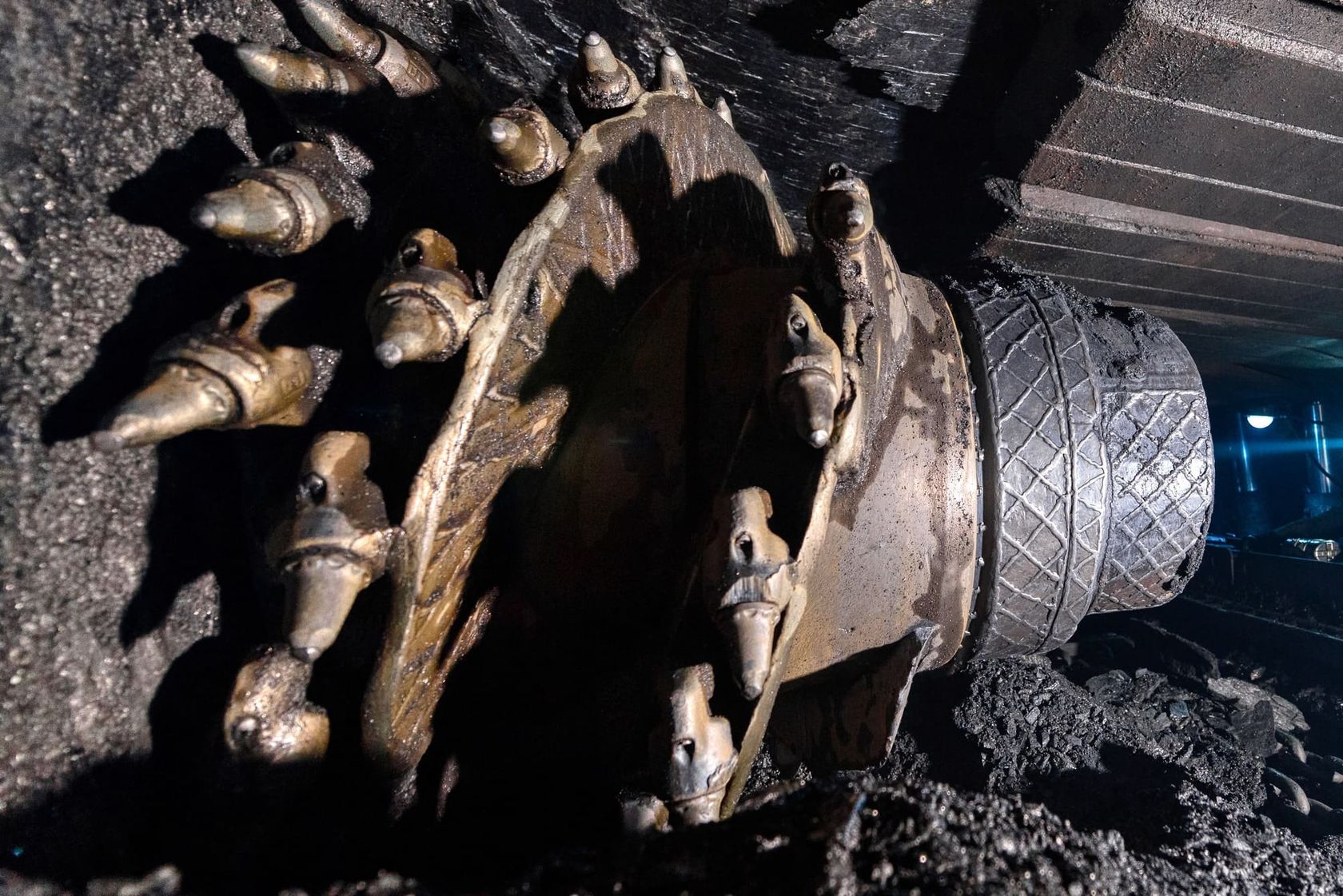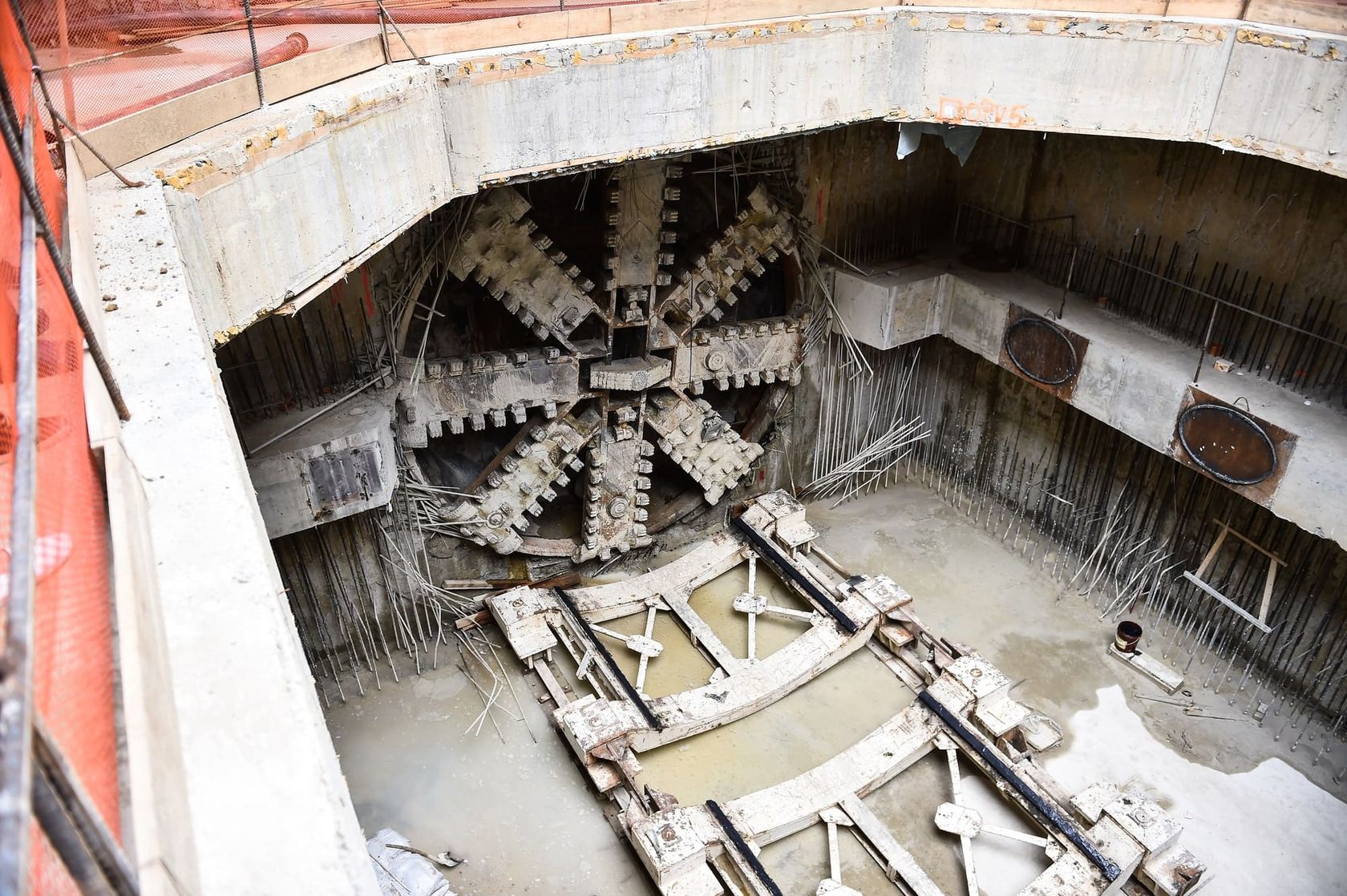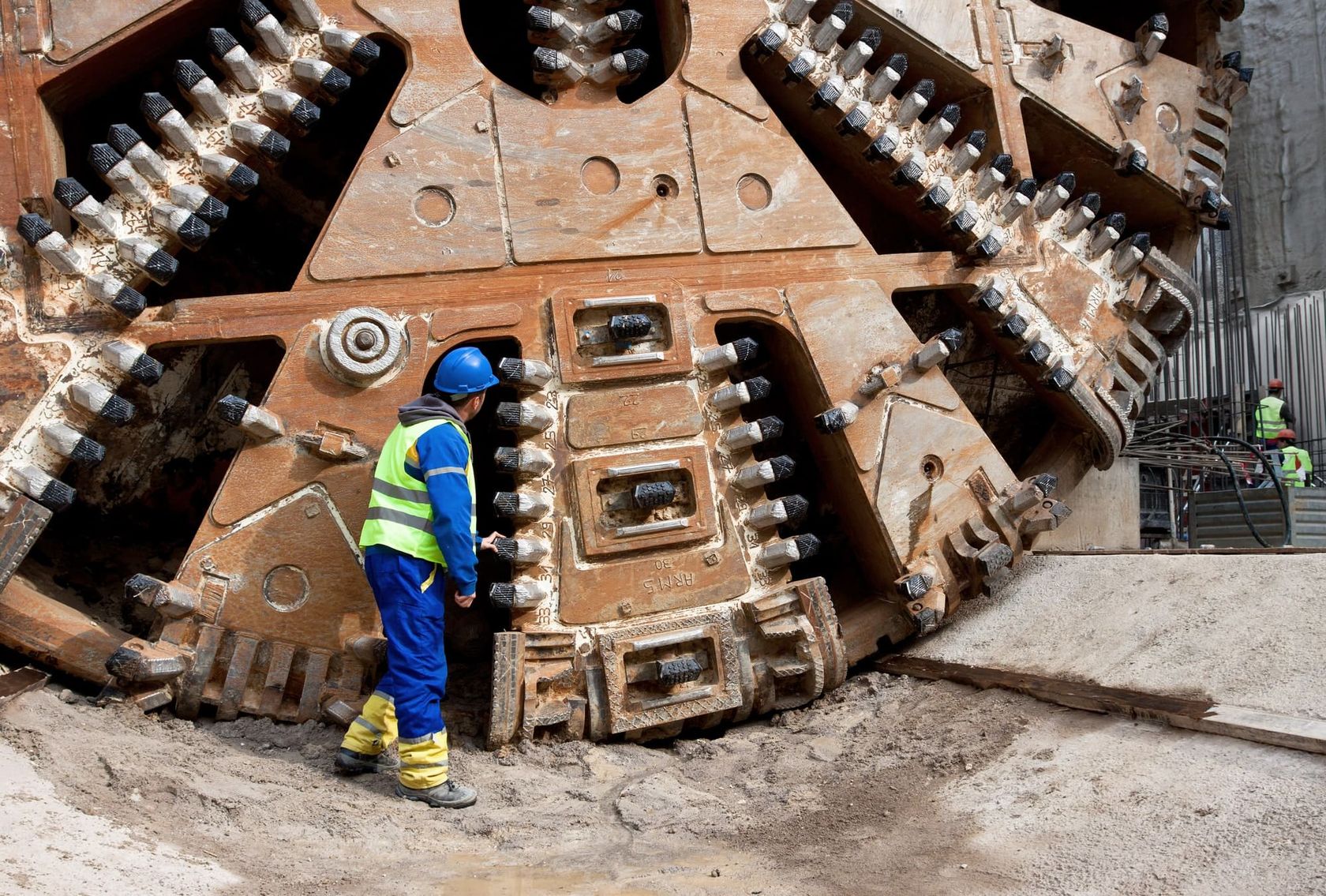The first TBMs housed equipment that breaks up the soil and terrain, but in those distant times, the machine could not yet carry away the extracted rocks. The first successful use of TBMs dates back to the early 1950s, which significantly expanded the potential for carrying out such underground projects. The task of this machine was to excavate shale rocks. A few years later, the machine was modified so that it could handle hard rock. Thus, a prototype of the modern TBM appeared almost 70 years ago.

Materials for TBM
Today, the industry uses durable materials such as carbon fibre reinforced plastic, aluminium and titanium for many tasks. However, when it comes to the construction of underground infrastructure, steel is the most suitable material, because of its characteristics. Cost also plays an important role in the choice of material for the TBM. And in this matter, steel also wins for the drills.
Giant, powerful TBMs work on a variety of surfaces, from hard rock to sand, due to the circular cross-section at the head. Disc cutters (milling tools) made of hardened steel are used in these machines. Cutters that dig up soil and rock should be durable and resistant to damage from drilling in hard rock. In whatever conditions the TBM is operating, the vibrations created by friction between the cutting head and the soil or rock require a strong and heavy structure to withstand them. It is for this reason that the plate used for the front shield of the machine is made of fine-grain steel, pursuant to international standard EN 10025.
Steel is used for the fabrication of other drilling tools and parts, for example, for disc cutters. Their production is started in an electric arc furnace as molten steel, then they are vacuum degassed, poured into molds and treated with argon gas. Castings are used to make cutter blanks. Then the blanks are subjected to mechanical and heat treatment. The smallest cutters are 16.5 centimetres (cm) in diameter. On large machines, cutters can be up to 50 cm in diameter. The most common disc cutters for TBM are 43 cm and 48 cm.

The state-of-the-art equipment for monitoring the operation of the machine, as well as a conveyor for the destroyed rock, is located behind the front shield of the machine.
In fact, the front end of the TBM, as well as the entire structure, is made of steel, but the parts that start the unit are also made of steel plates.
The TBM fulfils its functions with a fine-grained tool steel. Its strength and weight allow it to overcome vibrations and also ensure high-quality operation of disc cutters, which are subjected to enormous physical stress when passing through hard, crystalline rocks. It is these characteristics of steel that have made it possible to implement large projects associated with unique underground engineering challenges around the world.
Over the years, the requirements for the steel used for the fabrication of TBMs have changed. In essence, they are aimed at making the steel even stronger and more suitable for welding.

Large underground projects
There are a number of tunnel projects that would not have been possible without modern TBM technology. The latest and most ambitious of these is the ring road ... at the bottom of the Atlantic Ocean. The Faroe Islands junction is part of the more than 11 kilometre (km) long underwater Esturoyartunnlinn tunnel, connecting the two largest islands of the archipelago. The tunnel is decorated with various sculptures and the green-blue lighting provides a reminder that all of this beauty is under water. This is the third underwater tunnel in the Faroes, for which the issue of transport links between the islands of the archipelago is critical.
Another significant project is the 14.5 km Eurasian tunnel connecting the European and Asian shores of the Bosphorus in Turkey. The tunnel was built for road transport, which made it possible to significantly relieve the congested streets of Istanbul.
In addition to underwater tunnels, there are noteworthy projects that were laid in hard-to-reach places, such as the Gotthard Beis tunnel, which runs under the Swiss Alps. A railway line passes through this tunnel, which took almost 20 years to build.
Today, it is difficult to imagine an underground infrastructure without the steel monster machines that make it possible to implement truly unique ideas and make our lives simpler and more comfortable. And despite the fact that more and more durable alloys and materials for TBM appear, steel still takes its place in the design of complex drilling machines.
